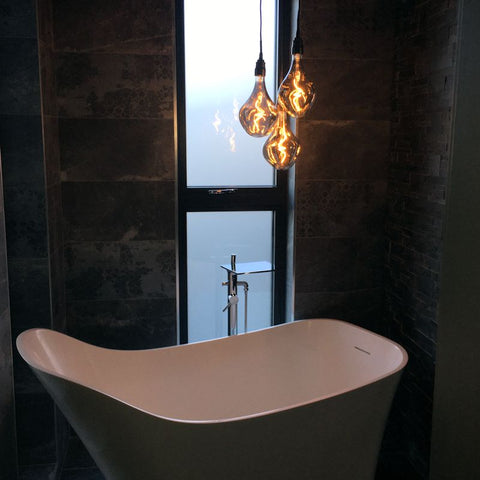Your Cart is Empty


For many of us, the internet is the first place we go for advice whenever we’re undertaking a difficult task for the first time. Whether you’re building an extension or fitting a shelf; the internet really is an unparalleled font of knowledge for all things DIY.
If you’re thinking of carrying out a bathroom renovation this year, you may be tempted to turn to Google for help. It’s easy to see why. There are plenty of brilliant blogs and websites out there offering essential advice on home improvement. But there are also a number of half-truths and myths surrounding bathroom lighting that can complicate the process, leading well-meaning renovators down the garden path.
Here, we’ll do our best to set you right by debunking three common bathroom lighting whoppers, so that your renovation shines as brightly as the bright idea that informed it.
Myth 1: You have to expand your bathroom to achieve an opulent look
Many of us are attracted by the opulence of a large, lavish bathroom. Those with limited space may become frustrated and opt for drastic measures, like moving walls around or even knocking them through.

We’re here to say: stop. Why not consider an easier option first? Carefully-chosen bathroom lighting can have a huge impact on the sense of space within a room.
To make a small room look bigger, it’s important to create different zones within your bathroom by placing multiple light sources across different areas, spreading focus across the full space.
Myth 2: A bold ceiling light is the only way to go
You don’t need to rely on a single light source in the centre of the room. A feature pendant can make a bold statement, but it’s important to maximise your space by including a range of light sources within your design.

Opt for appropriately IP-rated luminaires above the sink, shower and bathroom mirror. These will double as task lighting to help you carry out day-to-day tasks like brushing your teeth and shaving - meaning your lighting design will serve a practical purpose while also maximising your sense of space.
Recessed lighting is another great option. These unobtrusive little lights shine directly from cavities within your wall or ceiling, adding a subtle ambience to complement your task and statement luminaires.
Myth 3: Extra lights will amount to a higher utility bill
The impact of the light sources within your bathroom depends entirely on the efficiency of the luminaires you choose. Additional lighting won’t necessarily mean a higher utility bill. This is especially true if you opt for an energy-efficient lightsource like an LED, which is typically 80 per cent more efficient than a traditional lighting source such as fluorescent and incandescent lights.

There’s also a style benefit to using LEDs over fluorescent bulbs. "As an industry, we’re trying to avoid using fluorescent lighting,'' says San Francisco-based lighting designer Bruce Goff. "They buzz, flicker and glare. We can’t dim them and we don’t look good in that greenish cast."
As well as offering a more warm, flattering light source, LEDs draw much less power than traditional lighting. A typical 84-watt fluorescent can be replaced by a 36 watt LED to give exactly the same level of light. That means you can afford to include a greater number of luminaires in your bathroom renovation plans by replacing your fluorescent and incandescent lights with LEDs, all while minimising your impact on the environment.
Win, win!
Not sure how to choose bathroom lighting with the right IP rating? Check out our handy guide to all things IP, here.
And for more lighting commentary, design news and advice, follow Gwyn Carless At The Light Yard on Facebook, Twitter, Instagram and/or LinkedIn